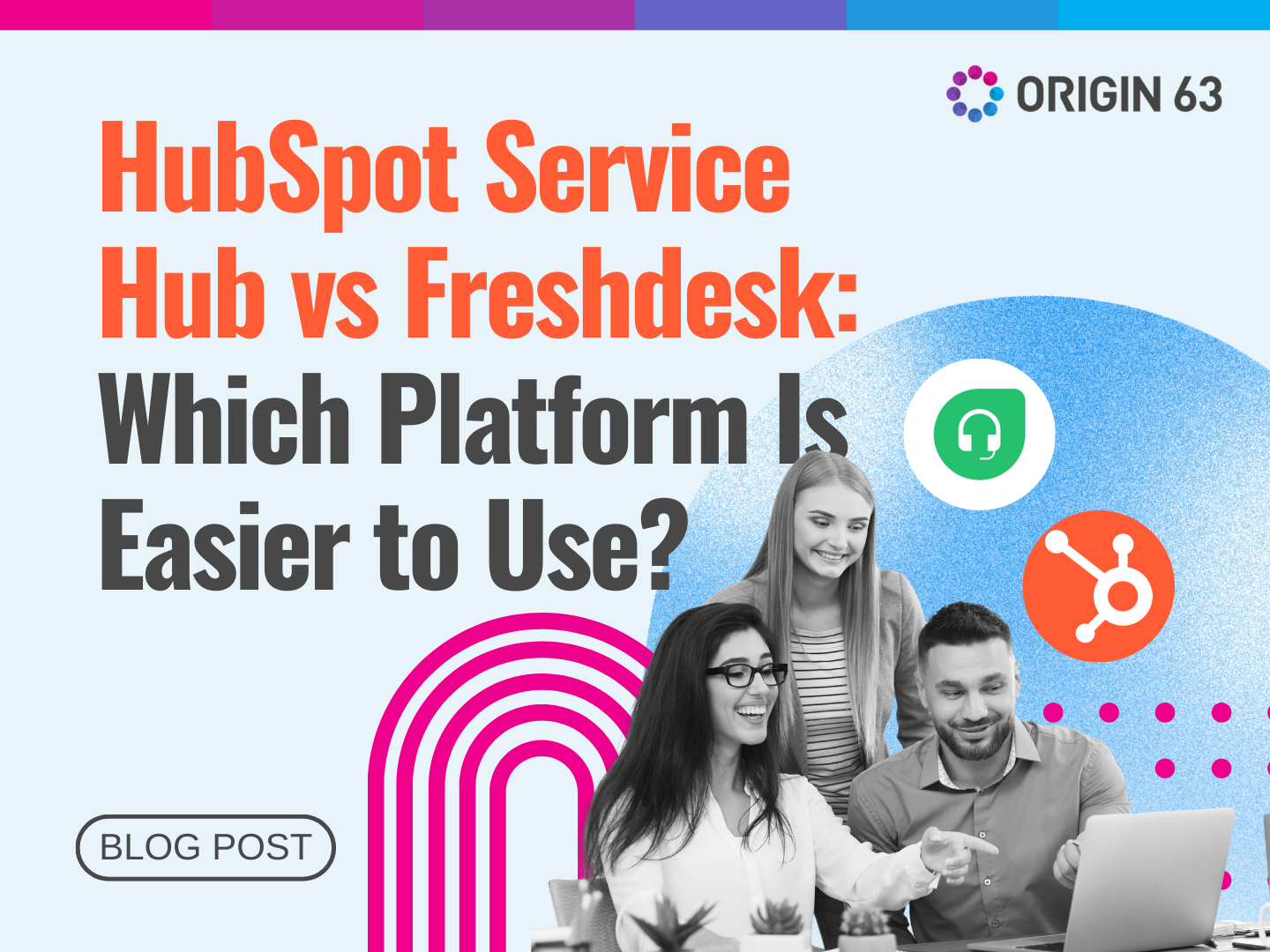Embracing Automation: Empower Teams and Delight Customers
Customers want their queries resolved instantly. If you can't keep up, they'll switch to your competition without a second thought. That's why more and more businesses are turning to automation to stay ahead.
Automation lets you provide lightning-fast service around the clock. It's like having a team of dedicated virtual assistants working tirelessly to ensure your customers receive the support they need whenever they need it.
In this blog, we'll discuss customer service automation and its benefits. We'll walk you through practical ways to implement automation strategies and share some best practices.
Understanding Customer Service Automation

Instead of having human reps handling every single customer interaction, automation allows businesses to leverage technology to streamline and enhance their customer service processes.
This isn't about completely replacing human support, it’s using intelligent systems to complement your customer service team’s efforts.
It offloads repetitive, time-consuming tasks from your human reps, so they can focus on more complex issues and personalized interactions that truly delight customers.
So, what kind of technologies are we talking about here? Let’s discuss a few examples:
1. Chatbots
These virtual customer service reps can have natural conversations with your customers, answering their questions and guiding them to solutions. Think of them as helpful digital assistants that never take a break.
2. Help Desk and Ticketing Software
Imagine having all customer conversations neatly organized in one place. These tools do that. They automatically create tickets for each inquiry, assign them to the right team member, and even generate reports to help you improve your service.
3. Customer Feedback Surveys
Want to know how your customers feel about your service? Automated surveys like CSAT and CES can pop up after a purchase or customer interaction, gathering valuable feedback you can use to improve.
4. Workflows
These are step-by-step instructions for your virtual assistants. You can set up workflows to automatically handle tasks like rotating ticket assignments, sending reminders, or escalating high-priority issues.
Benefits of Automation in Customer Service
Adopting automation takes adjustment and effort, just like pursuing anything new. So, you might wonder, "What's in it for me?" When done right, it can help you provide faster, more efficient service that keeps your customers happy and loyal.
Here are other benefits of using automation:
1. Offload Repetitive Tasks
Imagine having a team of virtual assistants handling all those mundane, repetitive tasks that bog down your human reps. These tasks include data entry, scheduling meetings, and answering frequently asked questions.
Automating these time-sucks helps your team focus on more complex issues and deliver personalized support.
The numbers don't lie—80% of customer service reps who use AI agree that it makes their lives easier by taking manual tasks off their plate.
2. Faster Response Times
Customers don’t like waiting, especially when they have a burning question or an issue that needs resolving. When intelligent systems handle inquiries, you can provide lightning-fast responses around the clock.
60% of support leaders are most excited about the possibility of AI delivering faster response times. And it's not just hype—reps who use chatbots to assist customers can save up to 2 hours and 20 minutes daily (The State of AI Survey by Hubspot).
That's a lot of time freed up to focus on more complex tasks!
3. Delight Customers with Self-Service

No one likes being put on hold or waiting for a response. Customers expect instant gratification, and that's where self-service comes in.
With automation, you can provide 24/7 self-help resources like chatbots and knowledge bases, empowering customers to find their own solutions at their convenience.
The best part? Customers love it! 88% of customers expect automated self-service when interacting with a business. Companies that offer self-service have seen a 39% rise in customer satisfaction.
4. Increase Revenue
At the end of the day, happy customers mean more money in the bank. Businesses have reported a 30% reduction in customer service costs by providing faster, more efficient service through automation (Infobip).
That's not all – companies with customer service automation can see up to 14 times higher sales than their competitors (Infobip).
How to Automate Customer Service with HubSpot
Implementing customer service automation isn't as simple as flipping a switch. It requires careful planning, the right tools, and a well-trained team.
HubSpot is a powerful platform that offers a suite of automation tools designed to streamline your support processes and delight your customers.
Here's a step-by-step guide to automating your customer service with HubSpot:
Step 1: Get a Customer Service Software Like Service Hub
The first step is to invest in a dedicated customer service automation platform like HubSpot's Service Hub. This powerful software enables seamless customer onboarding, flexible support, and nurturing lasting customer relationships.
You can activate and automate your omnichannel support strategy, offering self-service options like live chat, a knowledge base, and customer portals.
With Service Hub, you can create custom service KPIs, access in-depth analytics to improve your strategy and gather valuable customer feedback through surveys. It also lets you customize data and reporting dashboards to surface actionable insights.
Step 2: Implement a Help Desk and Ticketing System
Once your customer service automation platform is in place, setting up a centralized help desk and ticketing system is next.
HubSpot's help desk software is a powerful tool that automatically organizes all customer inquiries and conversations into a single inbox, making it easy for your team to stay organized and on top of things.
You can also set up automated routing and assignment rules to ensure that each ticket is automatically assigned to the right team member or department based on predefined criteria.
The right person handles each issue, streamlining the resolution process and improving efficiency.
With automated ticketing and routing, you can say goodbye to the chaos of manually sorting emails and messages and hello to a streamlined, organized customer service experience.
By leveraging these automation features of a platform like HubSpot's Service Hub, you'll be well on your way to providing faster, more efficient support that keeps your customers happy and your team productive.
Step 3: Set Up a Chatbot
Chatbots can handle customer inquiries 24/7. With HubSpot's conversational AI tool, you can create a chatbot to answer frequently asked questions, guide customers through self-service resources, and even book meetings or create tickets for more complex issues.
Here’s how to do it:
Connect a chat channel to the conversations inbox in HubSpot.
- Navigate to the Chatbot Builder under Conversations > Chatbot Builder.
- Click "Create Chatbot" to start building a new bot.
- Customize the welcome message that visitors will see when they start a chat.

4. Add bot actions like asking questions, setting contact properties, sharing knowledge base articles, or booking meetings.
5. Configure the bot's settings, such as availability and language.
6. Publish the bot and add it to your website or messaging channels.
Step 4: Automate Feedback Collection
Knowing your customers' feelings about your service can help you improve your processes. HubSpot's automated survey tools can gather valuable feedback at just the right times, like after a purchase or customer interaction.
This insight can help you identify areas for improvement and continuously enhance the customer experience.
Follow these steps to automate feedback surveys:
- Navigate to Automation > Surveys.
- Click "Create Survey" and select "Customer Satisfaction".
- Choose the delivery method (email, chat, or web page).
- Customize the survey details like language, company name, and email settings (for email surveys).

5. Set up the survey question, theme, and position (for web page surveys).
6. Configure any advanced settings or personalization tokens.
7. Publish the survey and set up triggers to send it automatically after customer interactions.
Step 5: Create Workflows for Repetitive Tasks
With HubSpot's workflow automation, you can set up step-by-step processes to handle all those pesky, repetitive tasks that bog down your team.
For example, you can create workflows to automatically rotate ticket assignments, send reminders for overdue tickets, or escalate high-priority issues.
Here’s how to create workflows on HubSpot:
- Navigate to Automation> Workflows.
- Click "Create Workflow" and choose to start from scratch or a template.
- Select your workflow's object types (contacts, companies, deals, etc.).

- Set the enrollment criteria to specify which records should trigger the workflow.
- Add actions and delays to the workflow, such as updating properties, sending emails, creating tasks, or enrolling in other workflows.
- Set up any filters or branch logic to customize the workflow's behavior.
- Review and publish the workflow to start automating your repetitive tasks.
Step 6: Step 6: Create a Comprehensive Knowledge Base
For a successful self-service strategy, you need an effective knowledge base. With Service Hub, you can easily create and maintain a robust knowledge base filled with helpful articles, FAQs, tutorials, and troubleshooting guides.
It empowers your customers to find their own solutions, but it also reduces the workload on your support team by deflecting routine inquiries. Customers can quickly search for and access the information they need whenever they need it without waiting for a human response.
Remember to keep your knowledge base up-to-date, organized, and easy to navigate. Leverage analytics to identify the most commonly searched topics and ensure your content addresses customers' most pressing needs.
Best Practices for Effective Customer Service Automation
If you want your automation adoption to be more effective, you should be strategic. Here are a few best practices to follow:
1. Ensure a Smooth Handoff Between Automation and Human Support

While automation can handle many routine tasks, there will be times when human intervention is necessary. Ensure your automated systems can seamlessly escalate complex issues to your human support team without any hiccups or disruptions for the customer.
For example, your chatbot could be set up to handle basic inquiries like order tracking, returns, and common product questions.
However, if a customer's issue becomes too complex or requires specialized assistance, the chatbot should seamlessly transfer the conversation to a live human agent.
2. Personalize Automated Responses
Nobody likes talking to a robot that sounds, well, robotic. Leverage natural language processing and machine learning to make your automated responses feel more human-like and personalized to each customer's specific needs and preferences.
You can also use customer data to personalize responses. Let’s say a customer contacts you about a delayed order. The automated response could include their name, order number, and expected delivery date:
"Hi Sarah, we're sorry about the delay with your order #12345. Based on the latest tracking info, it should arrive by May 1st."
3. Continuously Monitor and Optimize
Automation isn't a set-it-and-forget-it solution. Regularly monitor your automated processes, analyze customer feedback and data, and make adjustments to improve efficiency and customer satisfaction continuously.
With HubSpot, you can set up dashboards to track metrics like chatbot containment rate, customer satisfaction scores, and response times. Review this data regularly to identify areas for improvement.
If you notice customers frequently ask about a topic your knowledge base doesn't cover well, you should create new content. Or, if certain chatbot flows have high drop-off rates, you can optimize the conversation flow.
4. Balance Automation with Human Empathy
While automation can handle many tasks, it's essential to remember that customers still crave human connection and empathy, especially when dealing with complex or emotional issues. Train your support team to blend automated efficiency and human warmth perfectly.
While a chatbot may be able to process a return or provide shipping updates, more sensitive issues like complaints or billing disputes may require emotional intelligence.
Train your agents on active listening, empathy statements, and personal rapport-building. Have clear escalation paths to involve human support when an issue requires that personal touch.
Embrace the Future of Customer Service with Automation
Leverage automation tools like HubSpot's Service Hub to streamline your support processes, reduce response times, and free up your team to focus on building deeper, more meaningful connections with your customers.
Automation isn't about replacing human support altogether – it's about augmenting and enhancing your team's efforts.
It’s about offloading repetitive tasks and empowering customers with self-service options to provide faster, more efficient service while maintaining that all-important human touch.
Effective automation requires more than just implementing the right tools—it's about following best practices, continuously monitoring and optimizing processes, and striking the perfect balance between automation and human empathy.
Embrace Automation with Origin 63
Ready to improve customer service through automation? Partner with Origin 63, a leading HubSpot Solutions Partner, and let our experts guide you through implementing HubSpot's powerful Service Hub.
We'll help you design and implement a comprehensive automation strategy that leverages the full suite of Service Hub tools, from chatbots and knowledge bases to ticketing systems and workflows.
Contact us to schedule a consultation and take the first step towards transforming your customer service operations.













.png?width=90&height=90&name=Arrows%20Partner%20Badge-test%20(1).png)

